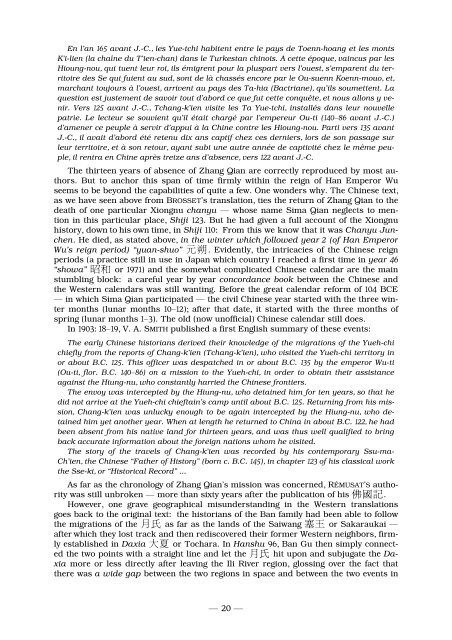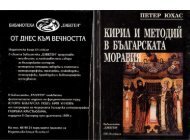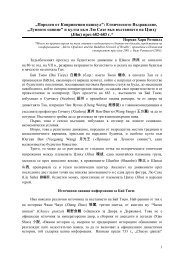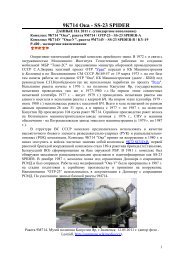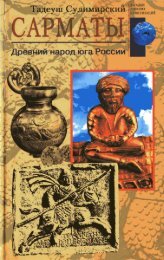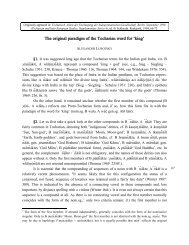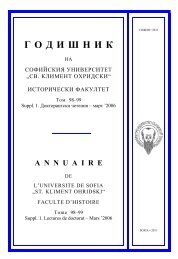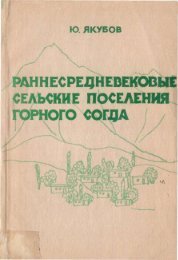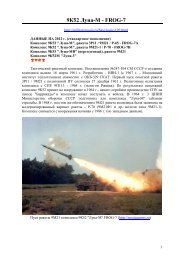You also want an ePaper? Increase the reach of your titles
YUMPU automatically turns print PDFs into web optimized ePapers that Google loves.
En l’an 165 avant J.-C., les Yue-tchi habitent entre le pays de Toenn-hoang et les monts<br />
K’i-lien (la chaîne du T’ien-chan) dans le Turkestan chinois. A cette époque, vaincus par les<br />
Hioung-nou, qui tuent leur roi, ils émigrent pour la pluspart vers l’ouest, s’emparent du territoire<br />
des Se qui fuient au sud, sont de là chassés encore par le Ou-suenn Koenn-mouo, et,<br />
marchant<br />
toujours à l’ouest, arrivent au pays des Ta-hia (Bactriane), qu’ils soumettent. La<br />
question est justement de savoir tout d’abord ce que fut cette conquête, et nous allons y venir.<br />
Vers 125 avant J.-C., Tchang-k’ien visite les Ta Yue-tchi, installés dans leur nouvelle<br />
patrie. Le lecteur se souvient qu’il était chargé par l’empereur Ou-ti (140–86 avant J.-C.)<br />
d’amener ce peuple à servir d’appui à la Chine contre les Hioung-nou. Parti vers 135 avant<br />
J.-C., il avait d’abord été retenu dix ans captif chez ces derniers, lors de son passage sur<br />
leur territoire, et à son retour, ayant subi une autre année de captivité chez le même peuple,<br />
il rentra en Chine après treize ans d’absence, vers 122 avant J.-C.<br />
The thirteen years of absence of Zhang Qian are correctly reproduced by most authors.<br />
But to anchor this span of time firmly within the reign of Han Emperor Wu<br />
seems to be beyond the capabilities<br />
of quite a few. One wonders why. The Chinese text,<br />
as we have seen above from BROSSET’s translation, ties the return of Zhang Qian to the<br />
death<br />
of one particular Xiongnu chanyu — whose name Sima Qian neglects to men-<br />
t ion in this particular place, Shiji 123. But he had given a full account of the Xiongnu<br />
history,<br />
down to his own time, in Shiji 110: From this we know that it was Chanyu Jun-<br />
chen. He died, as stated above, in the winter<br />
which followed year 2 (of Han Emperor<br />
Wu’s<br />
reign period) “yuan-shuo” 元朔. Evidently, the intricacies of the Chinese reign<br />
periods<br />
(a practice still in use in Japan which country I reached a first time in year 46<br />
“ showa” 昭和 or 1971) and the somewhat complicated Chinese calendar are the main<br />
stumbling block: a careful<br />
year by year concordance book between the Chinese and<br />
the Western calendars was still wanting. Before the great calendar reform of 104 BCE<br />
— in which Sima Qian participated — the civil Chinese year started with the three win-<br />
t er months (lunar months 10–12); after that date, it started with the three months of<br />
spring<br />
(lunar months 1–3). The old (now unofficial) Chinese calendar still does.<br />
In 1903: 18–19, V. A. SMITH published a first English summary of these events:<br />
The early Chinese historians derived their knowledge of the migrations of the Yueh-chi<br />
chiefly from the reports of Chang-k’ien (Tchang-k’ien), who visited the Yueh-chi territory in<br />
or about B.C. 125. This officer was despatched in or about B.C. 135 by the emperor Wu-ti<br />
(Ou-ti, flor. B.C. 140–86) on a mission to the Yueh-chi, in order to obtain their assistance<br />
against the Hiung-nu, who constantly harried the Chinese frontiers.<br />
The envoy was intercepted by the Hiung-nu, who detained him for ten years, so that he<br />
did not arrive at the Yueh-chi chieftain’s camp until about B.C. 125. Returning from his mission,<br />
Chang-k’ien was unlucky enough to be again intercepted by the Hiung-nu, who detained<br />
him yet another year. When at length he returned to China in about B.C. 122, he had<br />
been<br />
absent from his native land for thirteen years, and was thus well qualified to bring<br />
back accurate information about the foreign nations whom he visited.<br />
The story of the travels of Chang-k’ien was recorded by his contemporary Ssu-ma-<br />
Ch’ien, the Chinese “Father of History” (born c. B.C. 145), in chapter 123 of his classical work<br />
the Sse-ki, or “Historical Record” ...<br />
As far as the chronology of Zhang Qian’s mission was concerned, RÉMUSAT’S authority<br />
was still unbroken — more than sixty years after the publication of his 佛國記.<br />
However, one grave geographical misunderstanding in the Western translations<br />
goes back to the original text: the historians of the Ban family had been able to follow<br />
the migrations of the 月氏 as far as<br />
the lands of the Saiwang 塞王 or Sakaraukai —<br />
after<br />
which they lost track and then rediscovered their former Western neighbors, firm-<br />
ly<br />
established in Daxia 大夏 or Tochara. In Hanshu 96, Ban Gu then simply connect-<br />
ed<br />
the two points with a straight line and let the 月氏 hit upon and subjugate the Da-<br />
xia more or less directly after leaving the Ili River region, glossing over the fact that<br />
there was a wide gap between the two regions in space and between the two events in<br />
— 20 —


